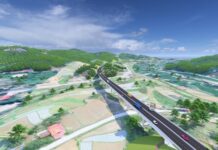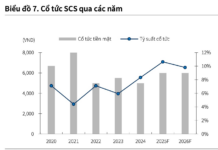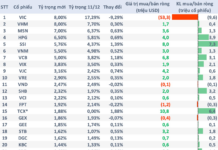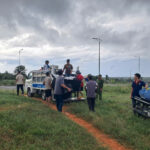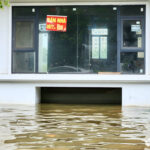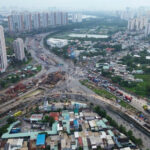According to a report by the Ministry of Agriculture and Rural Development, Storm No. 3 (internationally named Yagi) was the strongest storm in the South China Sea in 30 years, with a vast impact range covering 26 provinces and cities in the North and Thanh Hoa.
When the storm made landfall in Quang Ninh – Hai Phong on September 7, it brought extremely strong winds, with the highest recorded on land at Bai Chay (Quang Ninh) reaching 14, gusting to 17; Co To Island (Quang Ninh) recorded winds of 13, gusting to 16; Bach Long Vy Island (Hai Phong) recorded winds of 13, gusting to 14; Ba Lat (Thai Binh) recorded winds of 9, gusting to 12; and Hai Duong recorded winds of 12, gusting to 13.
The storm also caused heavy rainfall in the Northern region, with particularly high amounts in Vang Danh (Quang Ninh) at 346mm; Hon Dau (Hai Phong) at 240mm; Phu Duc (Thai Binh) at 432mm; Thuong Cat (Hanoi) at 244mm; Ky Son (Hoa Binh) at 379mm; Lao Cai (Lao Cai) at 346mm; and Pu Dan (Son La) at 349mm.
EXTENSIVE DAMAGE
The Ministry of Agriculture and Rural Development is in the process of assessing the damage, but due to power outages and communication losses in many areas, the full extent of the damage is not yet known.
According to a report by the Rescue and Salvage Agency, as of 10 am on September 8, 14 people had lost their lives (4 in Quang Ninh, 3 in Hanoi, 1 in Hai Phong, 1 in Hai Duong, 4 in Hoa Binh, and 1 in Military Zone 3), and 176 people were injured (157 in Quang Ninh, 8 in Hanoi, 5 in Hai Phong, 5 in Hai Duong, and 1 in Hoa Binh).
At around 5 am on September 8, a landslide occurred in Xom Cham, Tan Minh commune, Da Bac district, Hoa Binh province, affecting one household and resulting in 4 deaths and 1 injury.
In addition, 186 people were injured (157 in Quang Ninh, 13 in Hai Phong, 5 in Hai Duong, and 10 in Hanoi). At sea, 25 small cement and wooden ships sank at their moorings in Quang Ninh. Quang Ninh, Hai Phong, Thai Binh, and Hai Duong experienced widespread power and communication outages.
However, according to a report by the Rescue and Salvage Department – Ministry of Defense issued at 11 am on September 8, the number of fatalities differed from the figures provided by the Ministry of Agriculture and Rural Development. The Ministry of Defense reported 14 deaths (4 in Quang Ninh, 3 in Hanoi, 1 in Hai Phong, 1 in Hai Duong, 4 in Hoa Binh, and 1 in Military Zone 3). The Ministry of Defense has mobilized 17,367 personnel (including 4,730 military personnel and 12,637 self-defense militia) and 243 vehicles to carry out search and rescue missions and address the aftermath of Storm No. 3. So far, they have evacuated 38,047 households/141,843 people to safe locations, rescued 47 people, and recovered 4 bodies which were handed over to local authorities.
“Due to the long duration of the storm and the maintenance of strong winds and gusts, 3,279 houses were damaged, 401 electricity poles were knocked down, and many shops, headquarters, and schools were damaged. Numerous advertising signs and telecommunications poles were knocked down, and urban trees were uprooted or knocked down throughout the provinces and cities of Quang Ninh, Hai Phong, Hai Duong, and Hanoi.”
Ministry of Agriculture and Rural Development.
In terms of agriculture, according to the Ministry of Agriculture and Rural Development, 121,500 hectares of rice and crops were flooded and damaged (mainly in Thai Binh with 76,345 hectares, Hai Phong with 6,750 hectares, Hai Duong with 11,200 hectares, Bac Ninh with 11,009 hectares, Hanoi with 6,218 hectares, Nam Dinh with 2,800 hectares, Hung Yen with 11,923 hectares, Ha Nam with 7,418 hectares, Hanoi with 6,218 hectares, and Bac Ninh with 8,977 hectares). Additionally, 5,027 hectares of fruit trees were damaged (mainly in Hai Phong with 1,000 hectares, Thai Binh with 1,385 hectares, and Hung Yen with 1,818 hectares), and over 1,000 fish farming cages were damaged or washed away (mostly in Quang Ninh).

According to the Ministry of Agriculture and Rural Development, immediately after its establishment, the Forward Command Post urgently mobilized resources to the storm’s central region. They coordinated with the People’s Committees of the key provinces and cities, the 3rd Military Region, and the police to directly command, inspect, and supervise the response to the storm. They organized several direct and online meetings with local authorities to provide guidance, urge, and encourage the forces responding on the ground. After the storm passed, the Forward Command Post conducted a field inspection in Hai Phong and directed the statistics and damage assessment. They held a fourth meeting, both directly and online, with the localities to grasp the situation and provide timely guidance as the storm evolved.
Along with the remarkable results in the deployment of storm response measures, the damage caused by the storm was still significant, due to both subjective and objective reasons. Some ship owners and crew members did not comply with the guidance and calls of the authorities to go ashore when the storm landed, resulting in missing persons and loss of communication when the ship’s moorings broke and drifted. Despite the government’s advice against traveling during the storm, there were still cases of people on the road, leading to regrettable casualties due to falling trees. Additionally, there was a lack of compliance with trimming branches, securing houses, offices, warehouses, and signboards, resulting in extensive roof damage and collapses.
EMERGENCY RELIEF AND POST-DISASTER RECOVERY
Currently, the storm has weakened into a tropical depression and gradually dissipated in the northwestern region. However, its circulation will continue to cause heavy rainfall until September 9 in the northern provinces, especially in the northwest, with expected rainfall of 100-200mm, and up to 350mm in some areas. To stabilize people’s lives, restore production, and respond to the heavy rainfall after the storm, the Ministry of Agriculture and Rural Development requests strict adherence to the directive of the Prime Minister and the guidance of the Forward Command Post.
“It is necessary to inspect and prepare plans to ensure the safety of reservoirs and downstream areas, especially small hydropower reservoirs and vulnerable reservoirs that are already full. Arrange for on-site forces to be ready to operate and regulate water flow and handle any situations.”
Ministry of Agriculture and Rural Development.
For the delta and coastal areas: As strong waves and winds persist, the sea ban must be strictly maintained, and people must not be allowed to return to fishing vessels, cages, or watchtowers until it is safe. Deploy all measures to search for and rescue ships that have broken free and are drifting, as well as missing persons at sea. Provide support and condolences to the families of those who have lost their lives or been injured. Focus resources on repairing the damage caused by the storm, ensuring the provision of food and clean water, and preventing hunger and cold among the affected population. Mobilize forces to assist people in repairing their homes and cleaning up the environment to prevent diseases.
Prioritize the operation of pumping stations and irrigation systems to drain flooded rice and crop fields. Prepare seed reserves to restore production as soon as possible after the storm. Focus on draining urban areas, industrial parks, and low-lying areas. Work promptly to restore power and communication systems to support drainage and the daily lives of the people.
For the northern mountainous region: Deploy rapid response forces to inspect and monitor communities along rivers, streams, low-lying areas, and areas prone to flash floods, landslides, and mudslides. Proactively evacuate residents to safe places. Organize forces to guard and control traffic at underwater, flooded areas, and areas prone to landslides; do not allow people and vehicles to pass if safety cannot be guaranteed. Prepare personnel and equipment to promptly handle traffic disruptions.
The Big Spend: When to Take the Plunge and Invest in Hanoi’s Property Market
“Most people think I’m odd for enjoying house viewings on rainy days. They dread the traffic, slippery roads, and flooding that often accompany heavy rainfall. However, for me, each downpour presents a unique opportunity to thoroughly inspect my potential future home.”







